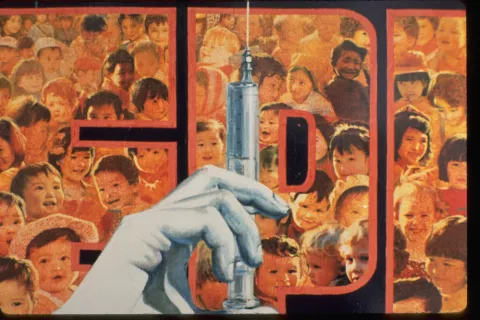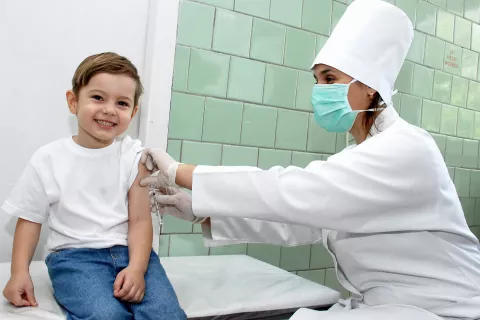Best practices and common bottlenecks in eliminating mother-to-child transmission of HIV
An information brief for seven UNICEF priority countries in Eastern Europe and Central Asia
- Available in:
- English
- русский
Highlights
According to Global AIDS Monitoring (GAM) 2021 and UNAIDS 2021 estimates, HIV prevalence among adults aged 15 to 49 years is systematically increasing in the Eastern Europe and Central Asia (EECA) region, while global estimates remain stable (Figure 1).1 Almost all new HIV infections in younger children from EECA are diagnosed in the 0 to 4 years age group, indicating that they occur either through pregnancy, birth or breastfeeding. In 2021, the estimated coverage of antiretroviral therapy among pregnant women in EECA was 65 per cent [59 to 75 per cent], which was lower than the global average. However, these estimates are not always in agreement with country surveillance data, as indicated both by independent consultants, and reports of national validation committees (NVCs) and regional validation committees (RVCs).
In general EECA is a region that has shown significant improvement in the cascade of HIV care in adults, from 21 per cent of diagnosed persons being on treatment at the beginning of the 90-90-90 initiative in 2015 to 51 per cent in 2022, and from 19 per cent of persons with viral suppression in 2015 to 48 per cent in 2022. The significant improvements both in general health care and in HIV care in the region does not, however, translate into progress towards certification of the elimination of mother to child transmission (EMTCT).
In 2014, WHO released the ‘Global guidance on criteria and processes for validation: elimination of mother-to-child transmission of HIV and syphilis’ (the ‘Orange Book’) and updates it regularly. The process of validation is the responsibility of ministries of health, and committees and secretariats at national, regional and global levels.
In 2016, shortly after the Global Validation Advisory Committee (GVAC) for EMTCT was established, Belarus became the first country in the EECA region to obtain validation of achieving HIV EMTCT, followed by Armenia in the same year. As EMTCT for single or dual validation is provided for 3 to 5 years, Armenia has re-applied and is currently undergoing assessment by WHO. Belarus requested re-assessment and in 2018 the GVAC endorsed its continued validation status for HIV and syphilis. Belarus requested re-assessment again in 2022, hosted the RVC in 2023 and awaits a decision from the GVAC. Moldova also obtained validation of the EMTCT of syphilis in 2016 and revalidation in 2018.7 Kazakhstan and the Republic of Moldova went through external validation by WHO for EMTCT of HIV and syphilis but did not meet all the required criteria. In addition, Kazakhstan and Uzbekistan invited external consultants to review their current status regarding country EMTCT and received advice on the process of preparing the request to the RVC (Table 1). These countries are close to meeting EMTCT indicators but could not yet obtain EMTCT approval. Other countries in the region, namely Georgia, Kyrgyzstan and Ukraine, went through the process of national evaluation, but have not yet requested external validation by the RVC.
In comparison with other regions, as of 2021 eight countries from Latin America and the Caribbean region (Anguilla, Antigua and Barbuda, Bermuda, Cayman Islands, Cuba, Dominica, Montserrat, and Saint Kitts and Nevis), were validated by WHO for the EMTCT of HIV and syphilis and four additional countries are on track for the dual validation of HIV and syphilis in 2023-2024 (PAHO communication).
Recognizing high prevalence countries’ struggle in meeting the criteria and to enable the application for triple elimination, in 2017 WHO introduced the Path to Elimination in order to recognize countries with high prevalence of maternal HIV, syphilis or hepatitis B virus in their efforts to reduce MTCT.9 It was fully incorporated into the global guidance in 2021. According to this strategy there are three levels (tiers) of impact and programme indicators (bronze, silver and gold) and countries are expected to gradually advance from one tier to the next, ultimately reaching the goal of elimination (Prevalence requirements, indicators and targets for certification on the path to elimination of MTCT of HIV, syphilis, and/or hepatitis B virus).5 In addition, the process was supplemented by the acknowledgement of the role of engaging civil societies, protecting human rights and gender equality, ensuring that these key elements have been addressed.






